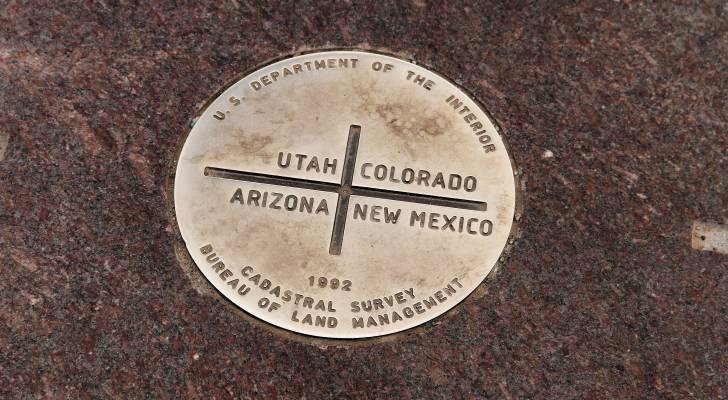
It’s no secret that health care expenses can add up quickly. What might surprise you, though, is just how much costs can swing depending on the hospital you choose.
A new report by Trilliant Health [1] highlights the wide gap. For example, ankle replacement surgery can cost anywhere from $22,011 to $197,057, depending on where you go.
Must Read
- Thanks to Jeff Bezos, you can now become a landlord for as little as $100 — and no, you don’t have to deal with tenants or fix freezers. Here’s how
- Dave Ramsey warns nearly 50% of Americans are making 1 big Social Security mistake — here’s what it is and 3 simple steps to fix it ASAP
- Robert Kiyosaki says this 1 asset will surge 400% in a year — and he begs investors not to miss its ‘explosion’
Costs can vary ninefold [3] across state lines and about threefold within the same state. That means you could pay nine times more if you don’t shop beyond your state, or three times more if you don’t compare options locally.
For patients, digging into health care prices can feel murky at best. Most know to check whether a doctor is covered by their insurance, but few feel equipped to shop around on cost since hospitals rarely make total out-of-pocket prices clear
Why the gap?
It’s easy to assume higher costs mean better care, but Trilliant’s report suggests otherwise. The report looked at hospitals featured on multiple “best of” lists and found no connection between price and quality.
Another assumption is that hospitals in pricier cities naturally charge more. While the cost of living does play some role, the report found only a weak connection.
So what’s really driving the price difference? While multiple factors are at play, it comes down to the negotiations between hospitals and insurance companies.
Behind the scenes, insurers haggle with providers over rates. For example, a colonoscopy with a sticker price of $5,000 might end up costing $2,500 after the hospital and insurer settle on a rate. But those rates vary widely by payer. Another example could be that one insurer might negotiate $85,000 for a hip replacement, while another pays $112,000 for the same procedure.
Those discrepancies filter down to consumers. But, hopefully, increased data and increased scrutiny on this issue will push prices lower, especially for informed consumers.
Read more: I’m almost 50 and have nothing saved for retirement — what now? Don’t panic. These 6 easy steps can help you turn things around
How to protect your wallet
In his first term, President Donald Trump called for transparency through an executive order [2]. Essentially, it requires hospitals and healthcare providers to submit clear, comprehensive pricing online about their services in a consumer-friendly format. While the date can be overwhelming, it also arms patients with the power to shop around [3].
The potential savings are huge. According to Trilliant, a coronary bypass can cost $39,579 in Ville Platte, Louisiana, to $354,745 in Hackensack, New Jersey.
If you want to find affordable care, start by calling the hospitals you’re considering. Have your insurance information and procedure details ready. The billing department should be able to give you an estimate, so you can compare it with other facilities.
Reputation and quality of care should be factored in, too, but a little shopping could save you thousands.
What to read next
- Are you richer than you think? 5 clear signs you’re punching way above the average American’s wealth
- Dave Ramsey says this 7-step plan ‘works every single time’ to kill debt, get rich — and ‘anyone’ can do it
- This tiny hot Costco item has skyrocketed 74% in price in under 2 years — but now the retail giant is restricting purchase. Here’s how to buy the coveted asset in bulk
- 22 US states are now in a recession or close to it — protect your savings with these 5 essential money moves ASAP
Join 200,000+ readers and get Moneywise’s best stories and exclusive interviews first — clear insights curated and delivered weekly. Subscribe now.
Article sources
At Moneywise, we consider it our responsibility to produce accurate and trustworthy content that people can rely on to inform their financial decisions. We rely on vetted sources such as government data, financial records and expert interviews and highlight credible third-party reporting when appropriate.
We are committed to transparency and accountability, correcting errors openly and adhering to the best practices of the journalism industry. For more details, see our editorial ethics and guidelines.
[1]. Trilliant Health. “Leveraging Transparency in Coverage Data to Reveal Actionable Information on Commercial Negotiated Rates”
[2]. The White House. “Making America Healthy Again by Empowering Patients with Clear, Accurate, and Actionable Healthcare Pricing Information”
[3]. Centers for Medicare & Medicaid Services. “Hospital Price Transparency”
This article originally appeared on Moneywise.com under the title: Your hospital bill could be up to 900% cheaper outside your home state — here’s how to ‘shop’ for healthcare savings
This article provides information only and should not be construed as advice. It is provided without warranty of any kind.